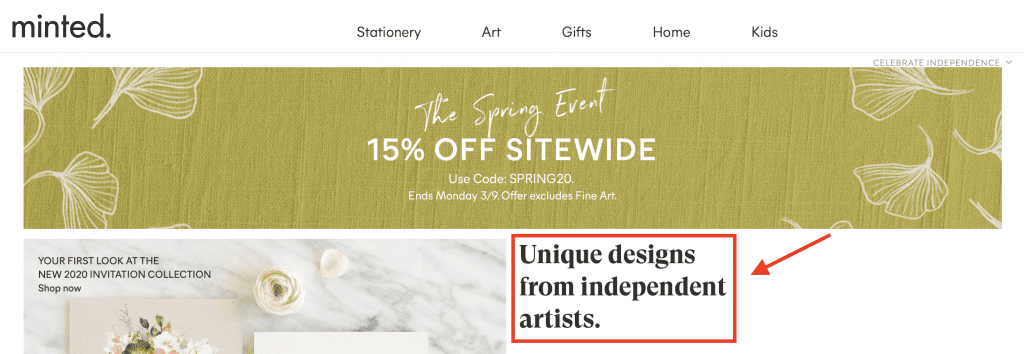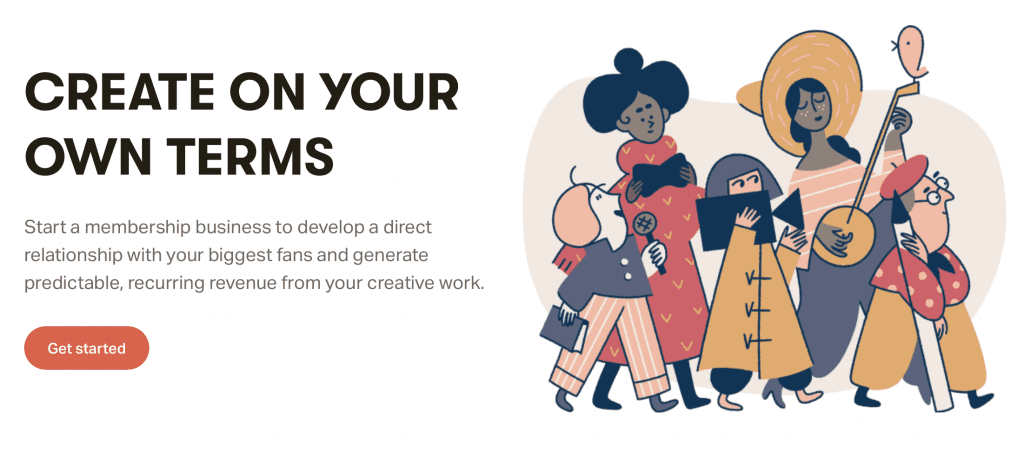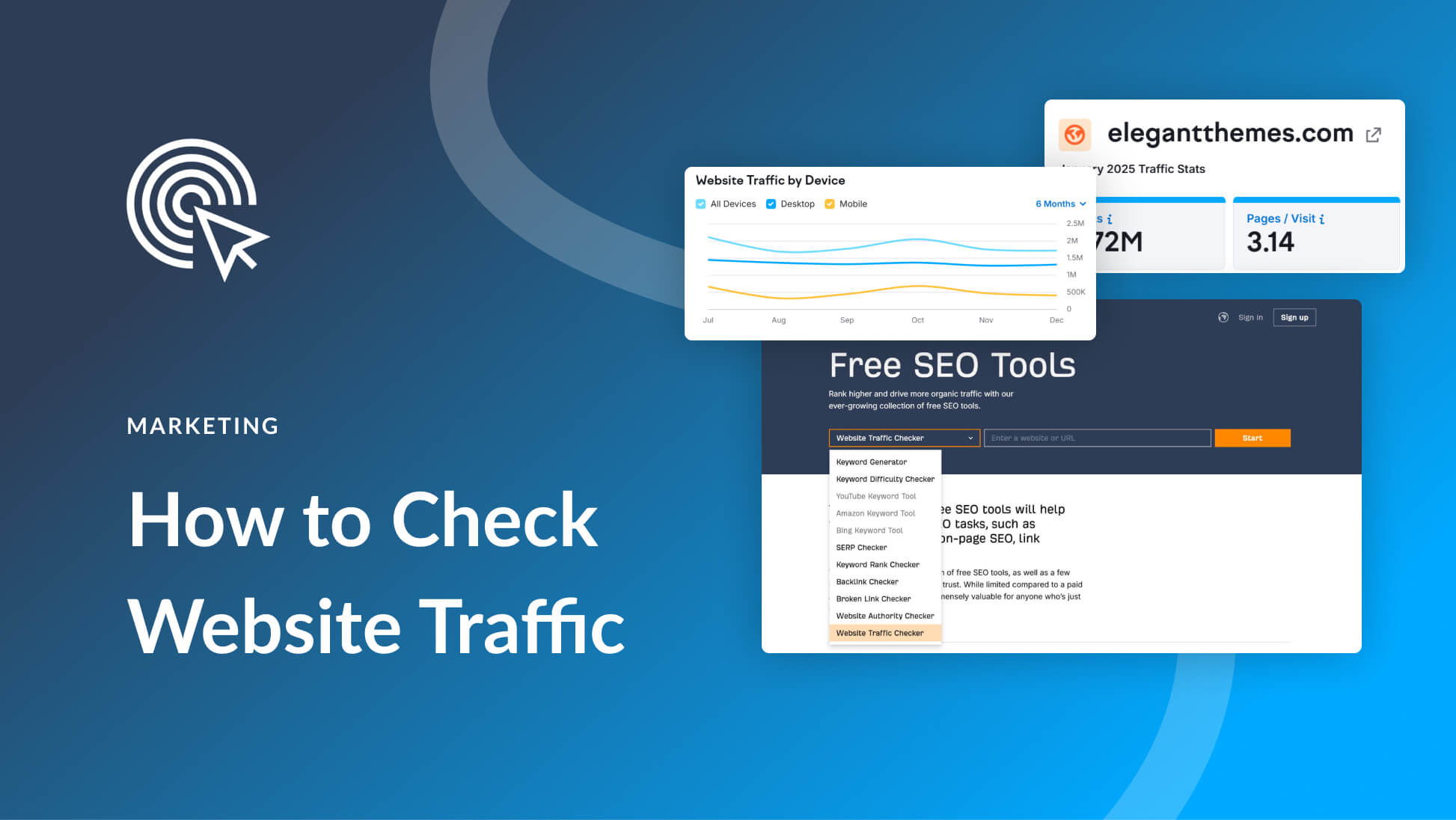Your value proposition is one of the strongest tools you have to convert strangers into leads and leads into customers. If you have a weak value proposition – or no value proposition at all – it could mean losing a sale that you would otherwise close. By identifying what it is that makes your brand or project extra-special, customers will see that they should trust you instead of someone else.
What is a Value Proposition?
Your value proposition is a short-form piece of content that communicates the biggest value your brand or project offers, particularly in comparison to the competition (without actually talking about the competition). It should clarify why a customer should buy from you instead of a competitor. It will be placed in a prominent place on your homepage, and it’ll also be used across your social media platforms and marketing materials.
Here’s the most important part: Instead of highlighting what you sell, highlight why your product or service can solve your customer’s problem. And make sure that you differentiate your problem-solving skills from the competition.
Some companies create a value proposition for each product or service they offer, or for different segments of their audience. PayPal has a time-sensitive value proposition for tax season:

What a Value Proposition is Not
A value proposition is not a full proposal. Instead, it will be part of your proposal or pitch. It’s also not a mission statement, positioning statement, slogan or tagline. Since it’s easy to get all of those confused, here’s a brief overview:
- Mission Statement: Communicates what the company stands for; usually on a website’s “About” page instead of the homepage
- Positioning Statement: Internal tool (instead of customer-facing) that describes the product or service and market; sometimes, how the company is ranked is also considered a positioning statement, such as “#1 marketing automation tool for small businesses!”
- Tagline: Short, catchy, noticeable statement
- Slogan: Similar to a tagline, but for a specific product, service or marketing campaign (sometimes used interchangeably with “tagline”)
Basically, a value proposition differs from all of these other types of copy because it’s length falls right in the middle (not super short and not long), it’s customer-facing and it makes your value clear, even if it’s not as creative or pithy as a tagline or slogan.
Here’s an example of what not to do. This company focused on the features instead of benefits and value. This would be better as part of the mission statement or as a portion of the value proposition.

It’s also important to know the distinction between a customer and an employee value proposition. Instead of attracting customers, an employee value proposition attracts the type of employees who will help you attract your target customers. For the sake of this article, you don’t have to understand the ins and outs of employee value propositions, but they essentially communicate the brand’s values and how they benefit employees.
How to Discover Your Brand or Project’s Value
What are the most distinguishable and unique characteristics of your brand or project? And which of those characteristics improve upon what your competition’s doing or fill in the gaps that your competition’s missing? Here are three steps to determining your value:
- List all of the benefits that your brand or project offers customers. If you have a hard time, start with the features of your products or services, then ask yourself how those features benefit the customer.
- Go a step further to determine how those benefits bring actual value to your customer’s life. To give you an incredibly basic example, let’s say you sell flowers. The benefit is that you can have a gorgeous vase of flowers on your table. The value is that every time you walk into the room, you’ll feel happier just by looking at the flowers or you’ll think about the person who gave them to you.
- Determine how the value you offer is different from the value your competitors offer. You may already know the answer to this, but if you don’t, it’ll take some competitor analysis to figure it out.
How to Create a Value Proposition
Writing a value proposition doesn’t have to take a long time, and the value proposition itself doesn’t have to be long, either. It can even be as short as one or two sentences, or you can extend it a bit with some extra formatting, like a headline and bullet points. As a reminder, your value proposition has to cover two main bases:
- What is the problem you solve for the customer?
- Why are you better than the competition at solving this problem?
This is Patreon’s value proposition, and it combines a catchy headline with a one-sentence explanation of what creators get out of the service:

Source: Patreon
Even a short value proposition isn’t a cinch to write, though. If you’ve done a lot of brainstorming or you have a lot that you want to get across, it can be difficult to boil that all down to a handful of succinct, clear, easily readable sentences. First, get an idea of how you want the value proposition to look, then start writing it. Let’s walk through it.
Choose the Value Proposition Layout
You don’t have to have each one of these components – mix and match to find the combination that works best, or keep it simple for now and expand it later on.
- Headline: Describe the final, biggest benefit the customer will get.
- Subheading/Sentence(s): Explain what you offer, who your target audience is and why you sell the product or service
- Bullet Points: List the benefits to the customer; you can also include the features.
- Visual Element: Add an image or video to drive the point home.
Or, you can go the minimalist route and just make sure you have these components in your value proposition:
- What you offer
- Target audience
- Top 3 benefits to the customer
Headspace does a little of both. At the top of the website is this:

You could argue that that’s more of a tagline than a value proposition, but they did an excellent job of narrowing down the three most valuable outcomes: “Stress less. Move more. Sleep soundly.” As you scroll down, their value proposition is fleshed out a bit more in a bulleted-type format:

Write the Value Proposition
Gather your brainstorming list and the layout you decided to go with. Plug in ideas where you think they’ll fit best. For example, what will work well for the headline vs. what should go in the bullet points? It’s okay if your first draft is long and messy – you’ll narrow it down and edit it.
Next, trim the fat. This part is easier to do if you handwrite everything. You’ll be able to cross out words without losing them forever. Or, if you’re going to use your computer, create a Google Doc in Google Drive. You can see all the changes you make by going through the version history.
If you’re worried that you’re not a creative or strong writer, keep it simple. A value proposition doesn’t have to be clever. Or, even if you are going to jazz it up before it’s finished, keep it basic at first. This will help you pinpoint what you want to say before you worry about how exactly you’re going to say it.
If you need help getting rid of extraneous words and improving readability, use the Hemingway app. It’s free and works right in your browser. To double-check that there aren’t any glaring grammar mistakes, run the copy through Grammarly. Don’t accept every single suggestion, though, because even Grammarly gets it wrong a lot of the time. Use it as a second pair of eyes for typos you may have missed or nitpicky comma rules you always forget.
Checklist for Finalizing Your Value Proposition
Before your value proposition is finished, you’ll have to double-check that it meets these criteria:
- Is it clear and easy for the layman or the skill level of your target audience to understand?
- Does it communicate specific results the customer can expect?
- Have you explained how you’re different and better than your competitors?
- Can it be read and understood within five seconds? (It may take a little longer if you have a lengthy value proposition.)
Wrapping Up
Your value proposition is an important part of your marketing funnel, and it’s one of the first things potential customers will see when they visit your website. It’s not set in stone, though. You can tweak it or completely overhaul it in the future, so don’t overthink it so much that you end up not writing it at all. As you learn more about your customers and their needs, and as their needs evolve, update your value proposition to reflect that.
If you’re still struggling to create a value proposition for your brand, think smaller. Write one for a single product or a segment of your audience. As you get more comfortable writing them, consider creating one that encompasses your entire company.
It’ll be a lot easier to create a value proposition if you know exactly who your customers are. Check out our article about creating buyer personas.
Featured Image via fatmawati achmad zaenuri / shutterstock.com









Hello, one of the great tutorial and it’s our pleasure to follow and read it… thank you. Keep it up